AI agents make decisions and take actions on their own to achieve specific goals. Since GenAI takes natural language as input, it's natural that most of the use cases developed in this initial wave are chatbots. But an agent can be triggered into action by more than “just” a chat interface.
In this article we want to show how you can build an AI agent that ensures content complies with corporate guidelines and is triggered into action by a scheduled scan of a website and by email.
Here’s how it works:
- A scheduled scan of the corporate website for new content triggers the agent into action.
- The agent now evaluates the new content for style and tonality mishaps based on different rules and guidelines
- The agent sends the author of the new content an email summarizing any issues and suggests improvements
- A reply to that email, requesting updates to the style and tonality guide, triggers new action by the agent.
- The agent receives the email with your update requests, reviews them, and decides which rules and guidelines need to be updated.
- After the agent has updated the relevant rules and guidelines, it emails you back, explaining what action it’s taken – which rules and guidelines it’s updated and how.
Watch Michael Berthold’s keynote at KNIME Spring Summit – "Good Data Makes Good Agents" – where he demystifies what agents are, explains how KNIME sees agents, and discusses how you can use data to make good agents.
The building blocks of an agent
Agents reach out to tools, AI workflows, and other agents, which perform specific tasks for them.
- Tools perform specific tasks. These tasks could be anything from retrieving and processing data, to classifying images, to predicting outcomes, and more.
- Intelligent tools add GenAI to enable capabilities like summarization, translation, or text generation.
- AI workflows combine multiple tools in sequence to accomplish more complex tasks. An example might be retrieving data, summarizing it, and sending it via an email.
- Agents go one step further and dynamically decide themselves which tools and AI workflows to use. Agents can be interacted with directly by users (in agentic applications) or can operate in the background, being called as REST services (agentic services).
For our example, we built different tools and AI workflows – the building blocks our agent will use to accomplish its tasks to check for style and tonality mishaps, and make updates to corporate style and tonality guidelines.
Below you can see the tools and AI workflows stored in a space on KNIME Hub.
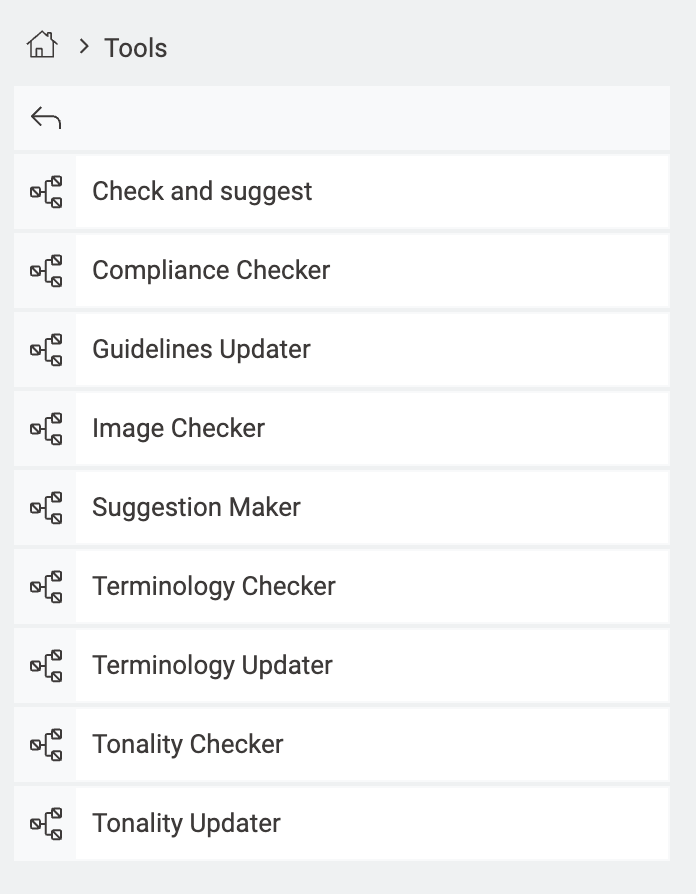
Building the agent with KNIME workflows
When the scheduled scan of the website detects new content, our agent is triggered into action. It uses two tools and an AI workflow, all built with KNIME workflows:
- Terminology Checker: A tool that compares the new content against a predefined list of forbidden terms
- Tonality Checker: An intelligent tool that identifies tone inconsistencies based on an internal set of style guidelines and uses an LLM to produce a list of issues.
- Compliance Checker: An AI workflow that combines the results of the terminology and tonality checkers, summarizes them, and suggests improvements.
The Terminology Checker tool compares texts against a list of forbidden terms
This tool accesses a list of terms in a spreadsheet on the KNIME Hub, checks whether any of the words in the spreadsheet are in the webpage, and produces a list of hits.

The Tonality Checker tool evaluates text against an internal style guide.
The Tonality Checker accesses the KNIME Hub where it finds our corporate style guidelines in a spreadsheet. The workflow connects with an LLM and asks it to check the content against the guidelines in the spreadsheet. The LLM outputs a list of issues.
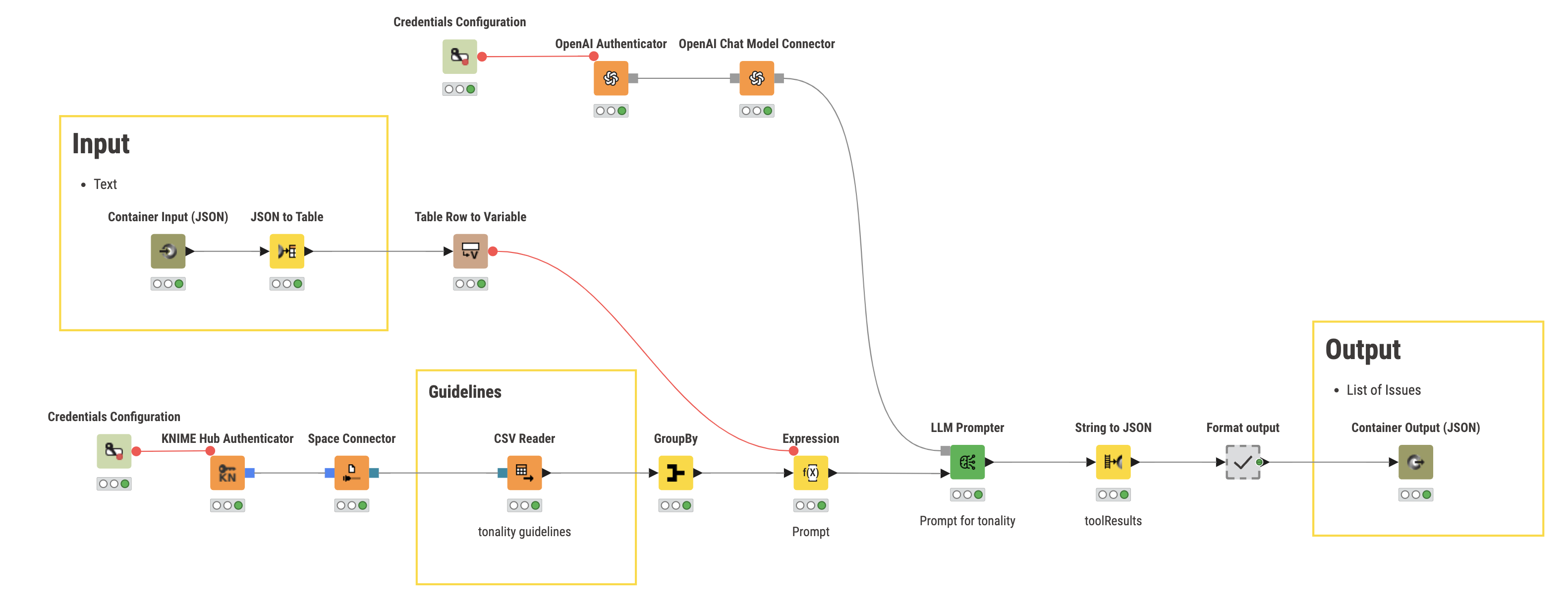
The Compliance Checker AI workflow combines results, summarizes, and suggestions improvements
The Checker lines up the two Terminology Checker and Tonality Checker tools, takes the output of each and then uses an LLM to produce a summary of the compliance check and suggest improvements.
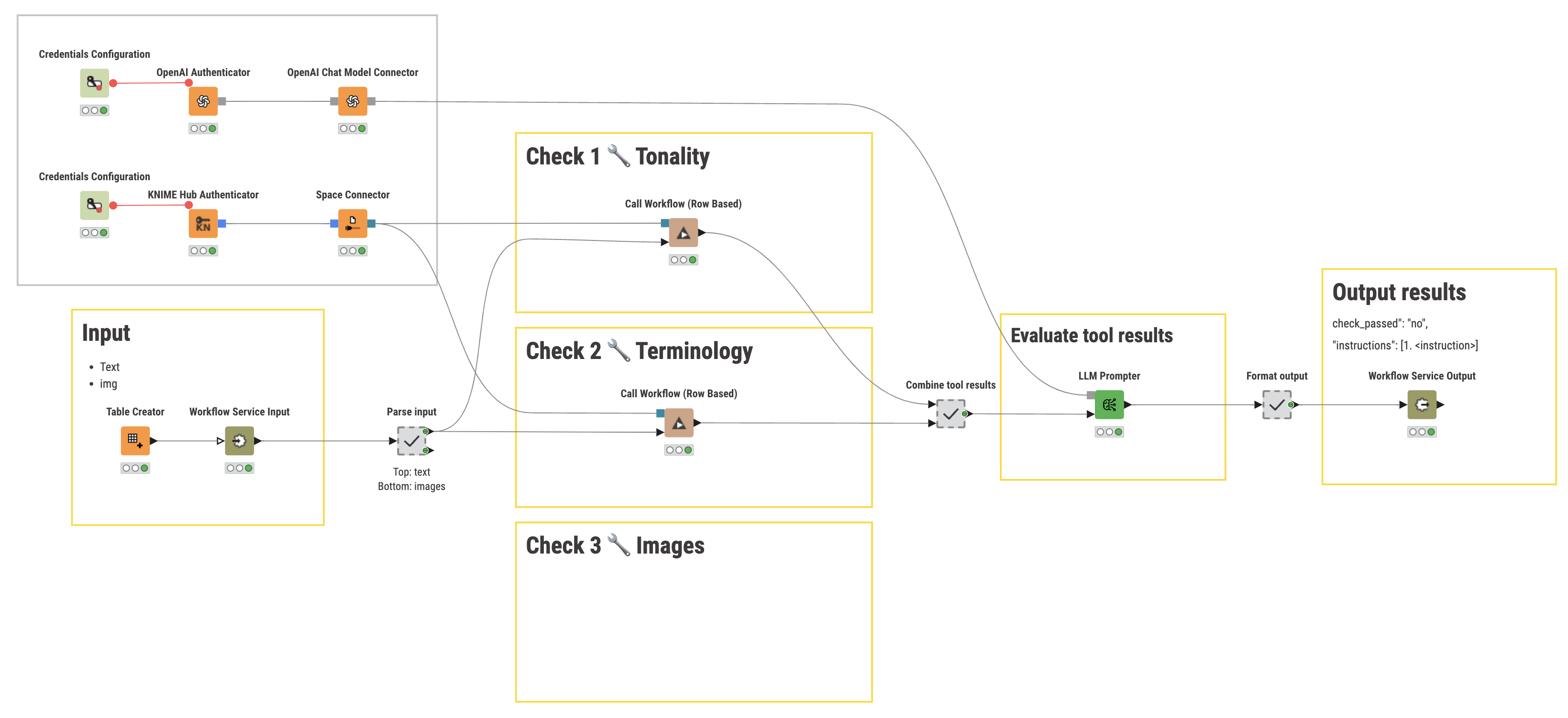
In this example, the agent follows a predefined sequence of checks. It becomes agentic when it dynamically decides which tools to use based on the specific task in hand.
The agent sends compliance results and improvements by email
The agent sends you the results of the compliance check plus suggestions for how to improve the content in an email.
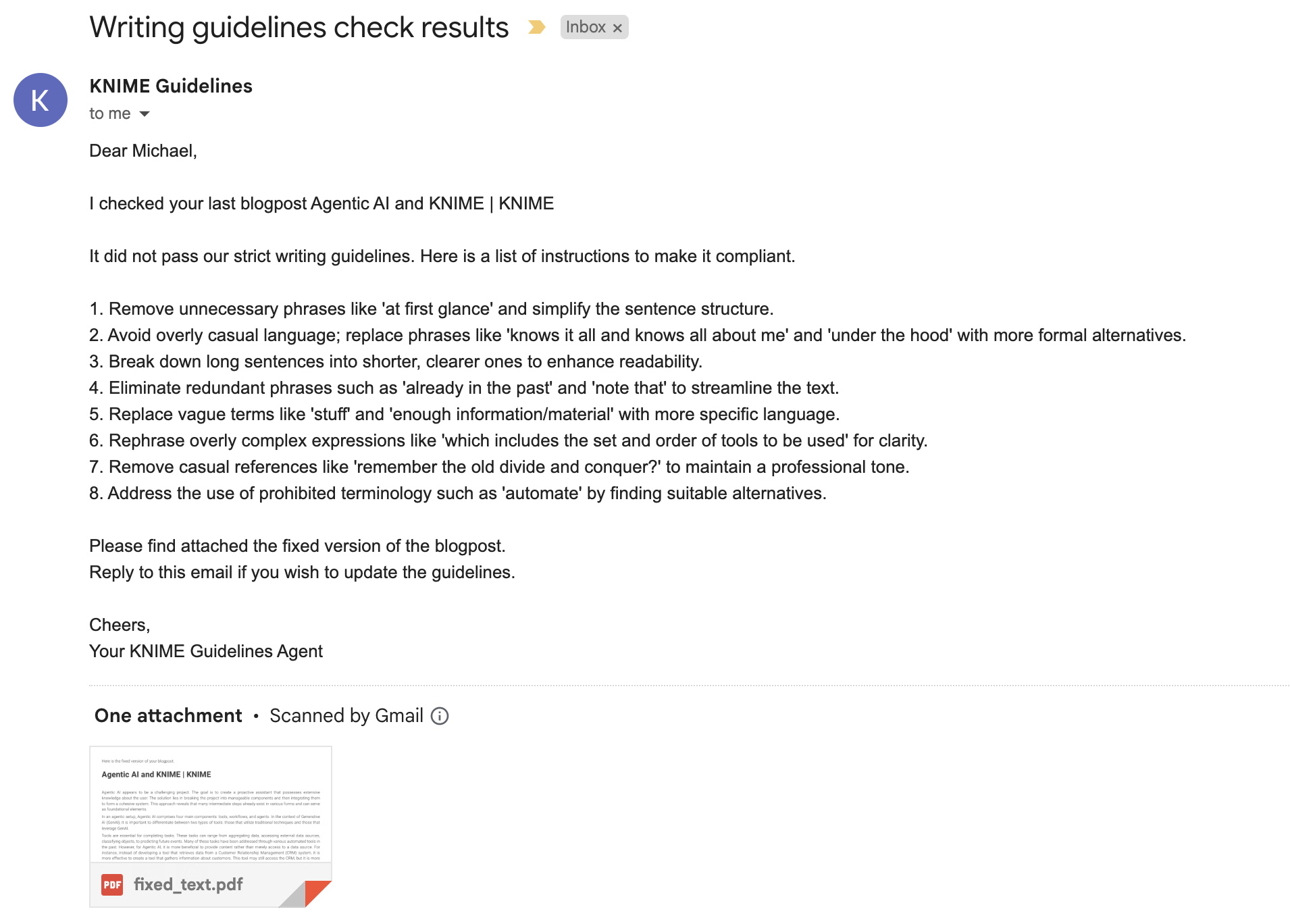
Now the AI workflow becomes agentic: Interact with the agent via email
At this point, the agent transitions from an automated compliance checker to an interactive system, when you email the agent to request it to modify style guidelines.

Your email triggers an agentic service which evaluates your email, decides which guidelines need to be updated, calls the relevant tools, makes the adjustments, and then sends you an email explaining what it’s done.
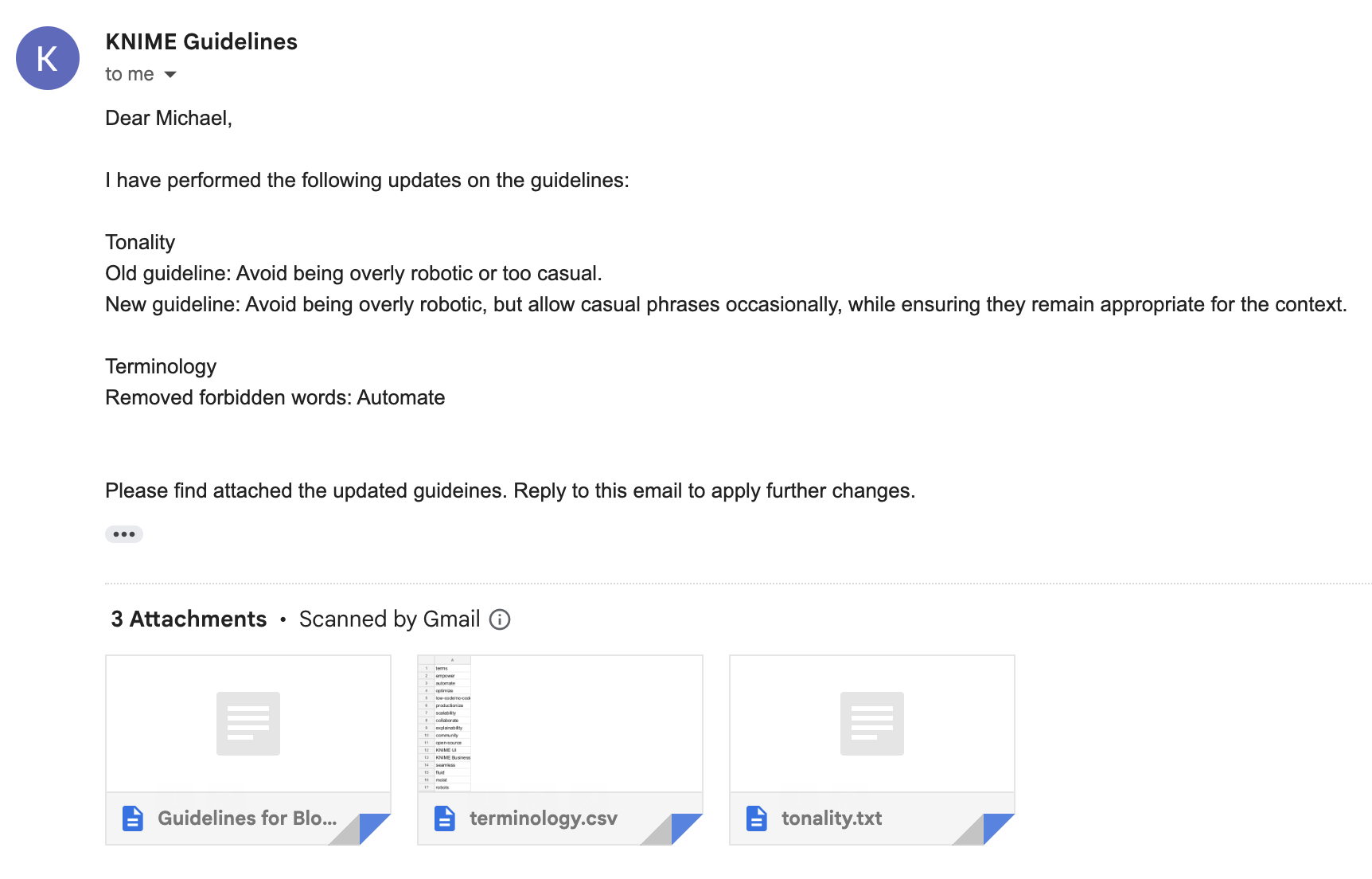
What goes on behind the scenes of your update request emails
A Guideline Updater – an AI workflow – lines up two new tools, the Terminology Updater and the Tonality Updater.
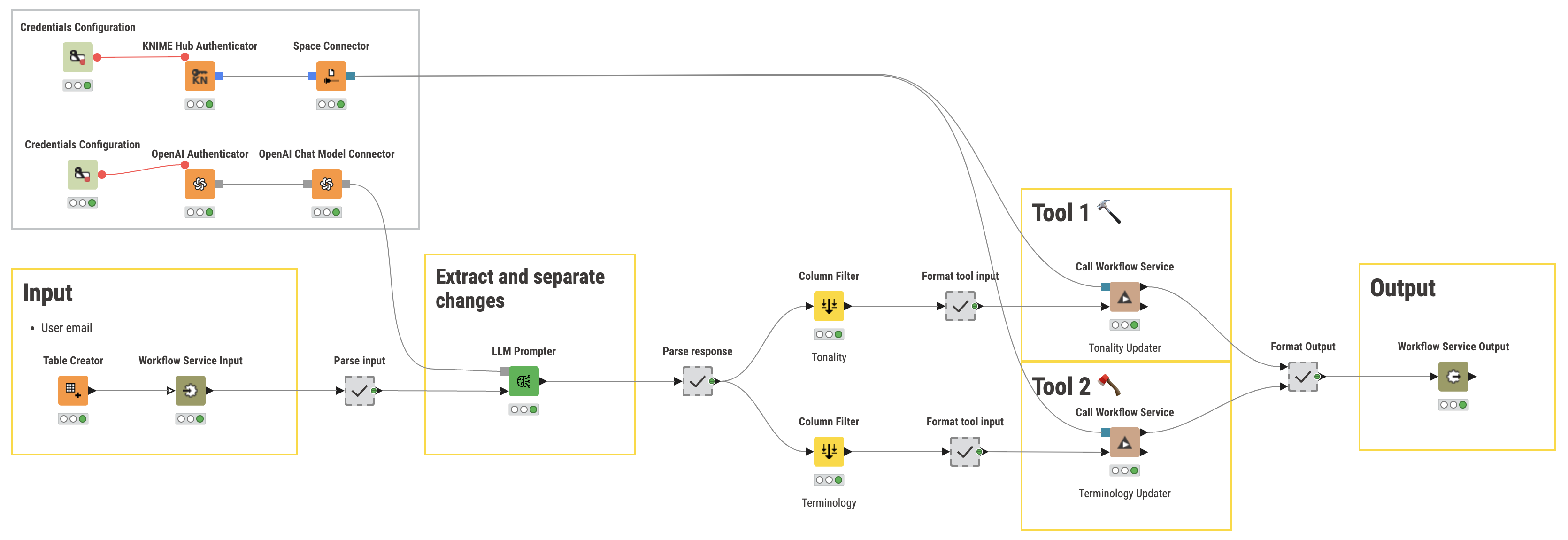
The Guideline Updater evaluates your email about the required update and decides which guidelines need to be updated, calls the respective Tonality (Tool 1) or Terminology (Tool 2) to make the updates.
These terminology and tonality files function as the agent’s memory and provide the information – the context – the agent needs to make informed decisions. The Guideline Updater tool therefore updates the agent’s memory with new information.
Add capabilities by building more tools and agents
You can expand the capabilities of your agent by building additional tools and agents. For example you could build a tool that checks whether any images included in the new content comply with your brand guidelines.
You can store all the tools, AI workflows, and agents in a space on KNIME Hub. Here they can be shared with colleagues – and other agents.

A quick, reliable, always-learning agent
The agent in this example is a quick, reliable observer of new content on your website. As an agent with memory it is able to adapt to all new information that’s added to its memory and improve its decision-making. Our agent is always learning.
This type of agent can take over repetitive, but extremely necessary work from domain experts so they can focus on other, more valuable tasks. The corporate content compliance checker we’ve built here can take over a task that, on a daily basis, takes up many hours of marketing time.
